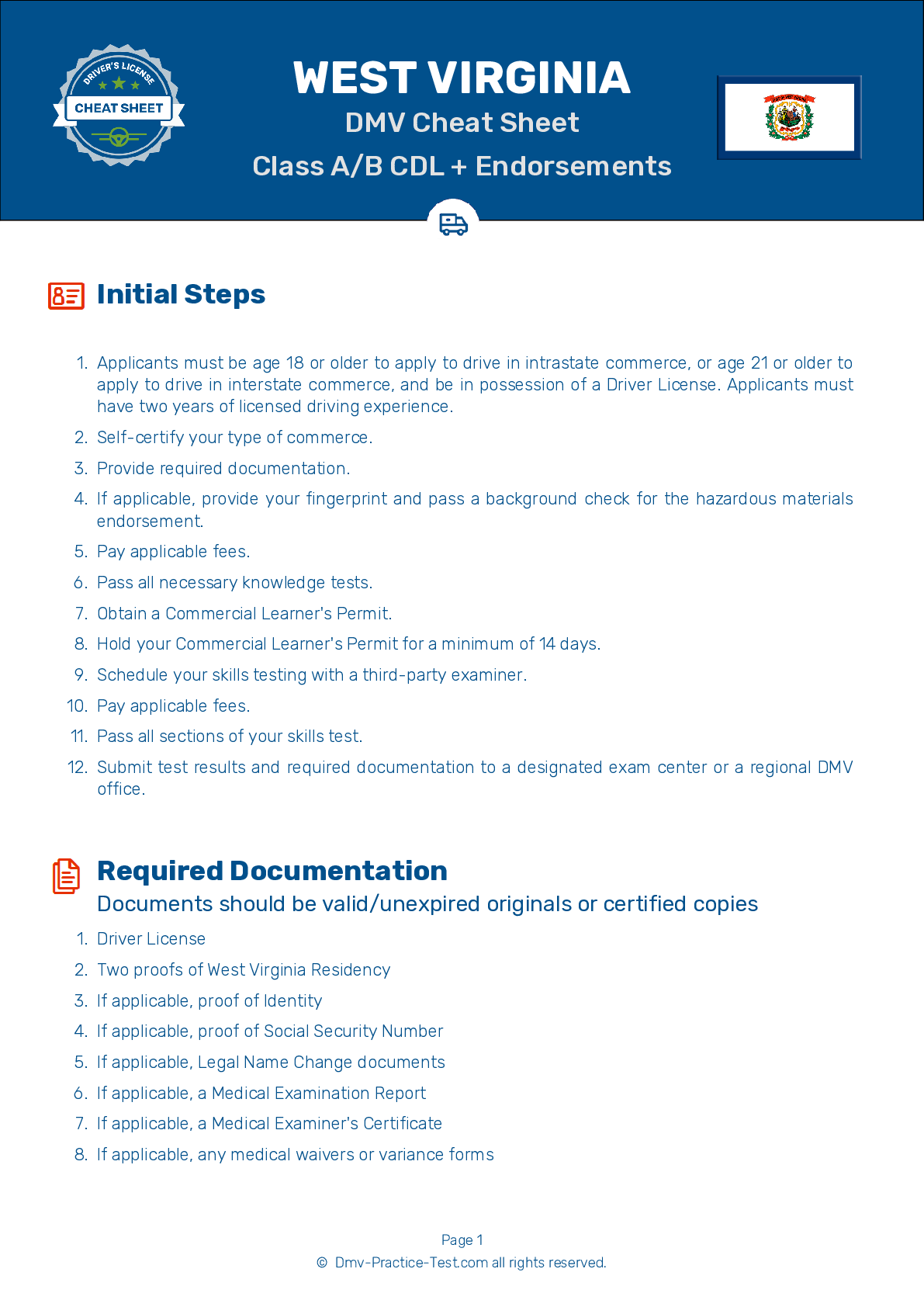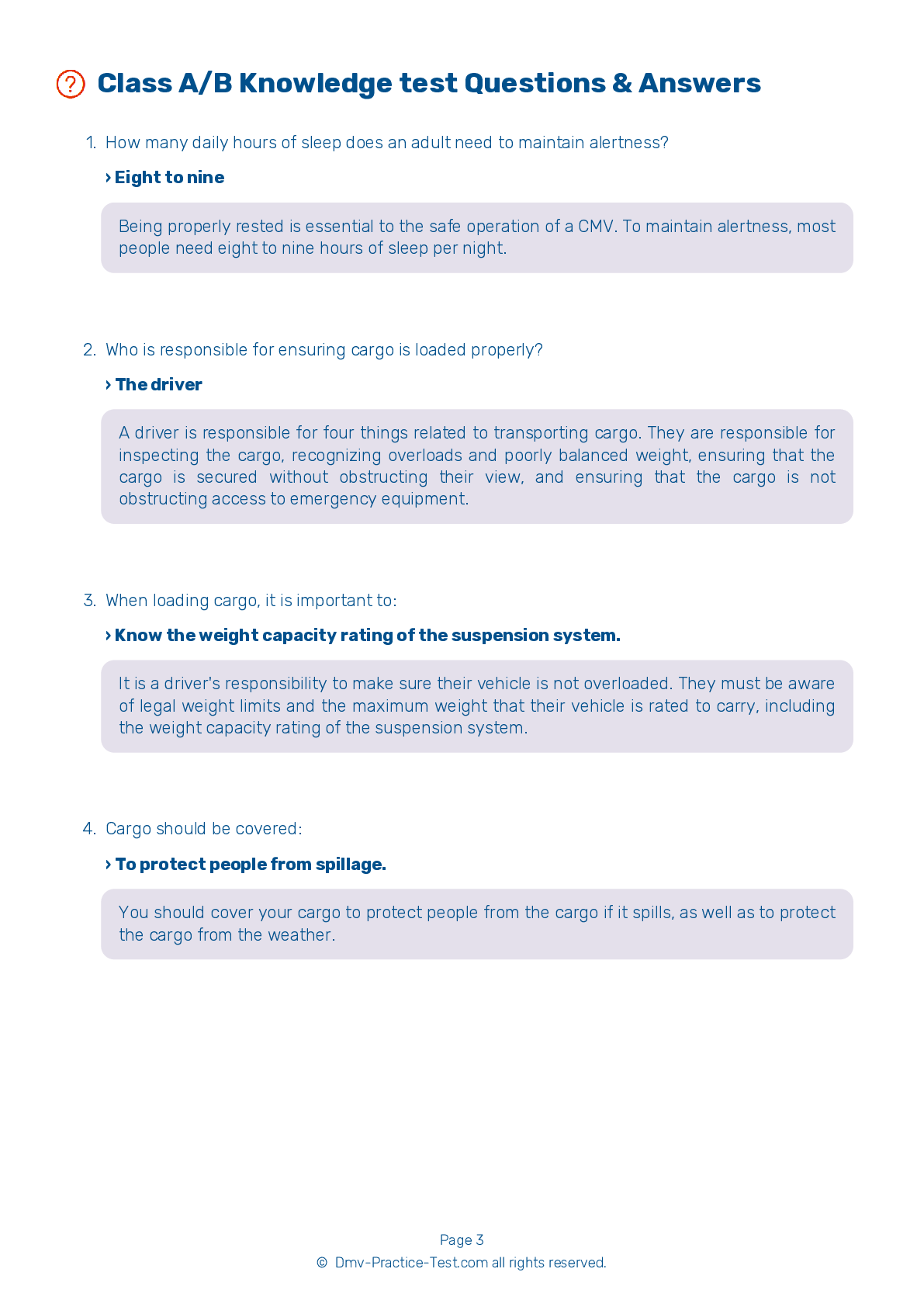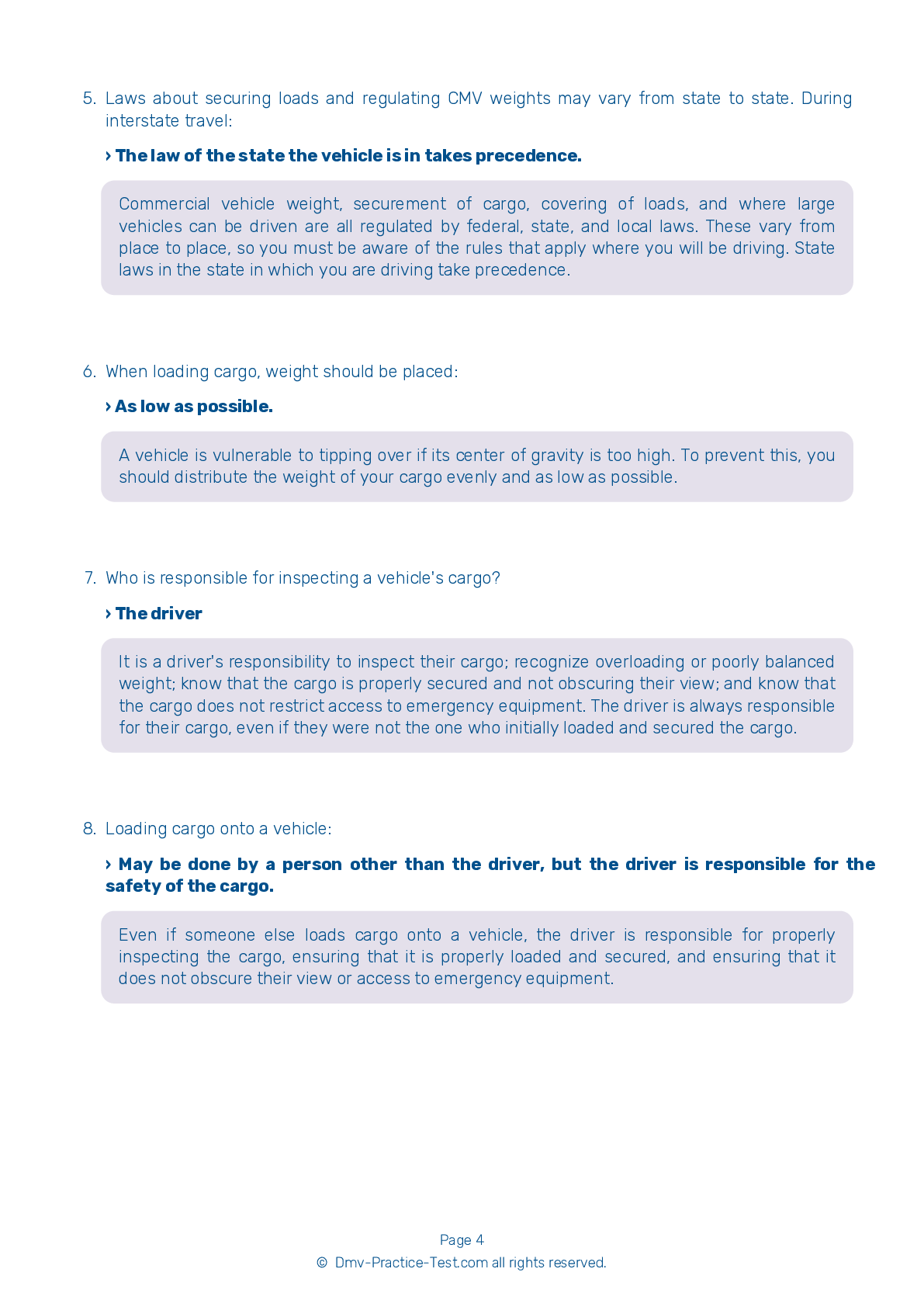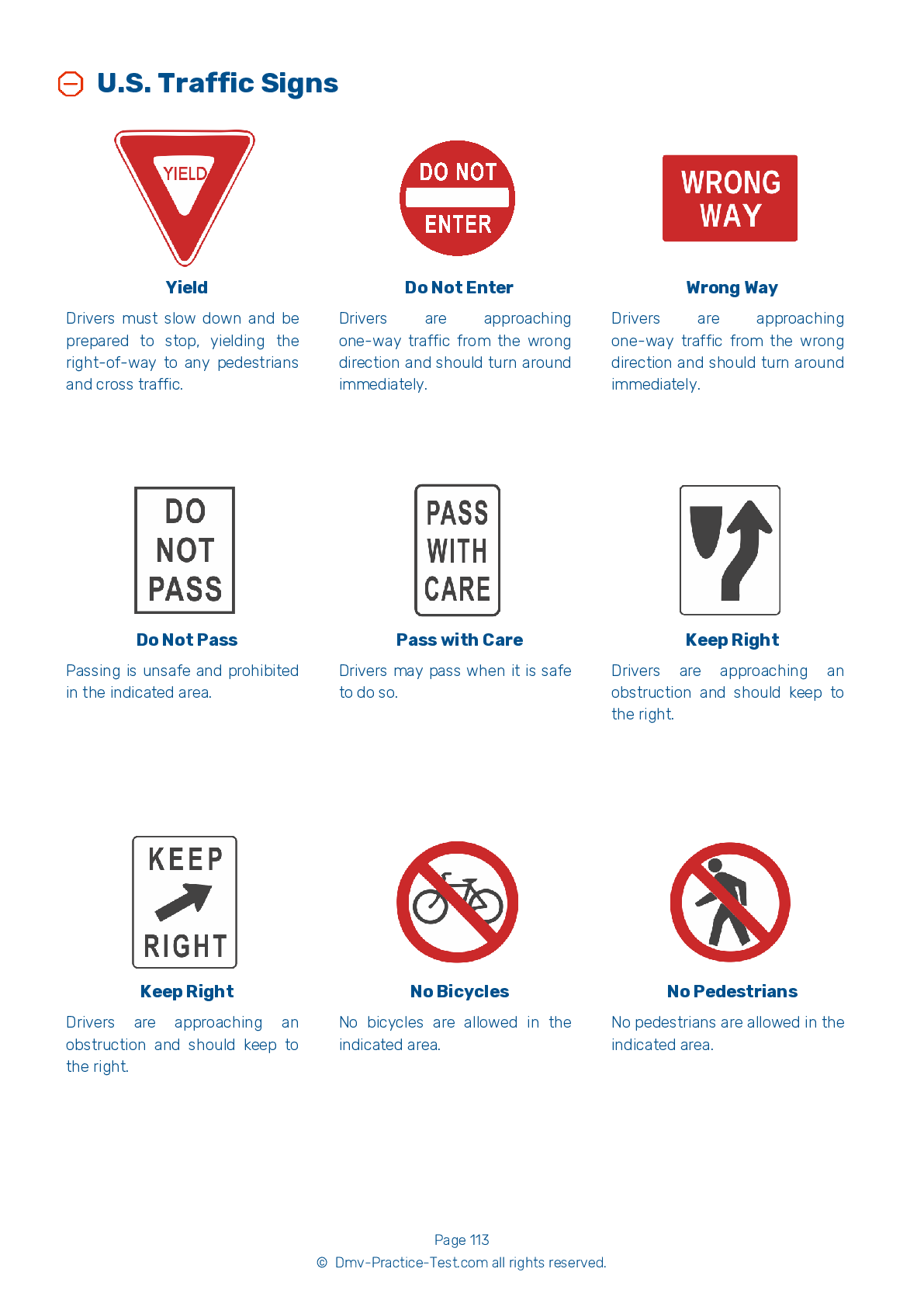Class A Driving Test | West Virginia 2025 #1 Page 2 of 7
Train for FREE online with our West Virginia class A license test. The official exam test consists of several obligatory parts, with all of them checking your knowledge of different blocks of road rules. If you need to obtain a WV CDL class A permit in 2025, practice as much as possible. Free sample tests published on our website will help you check and improve your knowledge and boost your grades. Please bear in mind that CDL class A requirements may vary from state to state.
8 . Pressing and releasing a brake pedal unnecessarily can:
In an air brake system, pressing and releasing the brake pedal unnecessarily can release air from the braking system faster than the compressor can replace it.
9 . When alley docking, your vehicle should be parked:
If you are asked to alley dock, you should first pull past the alley and stop your vehicle in a position that is parallel to the outer boundary. From there, you should back your vehicle entirely into the alley parking area. Your vehicle should be parked in a straight position within the boundaries of the parking space.
10 . Rims with welding repairs:
A driver should inspect wheels before a drive, specifically looking for damage on the wheels and rims. Wheels or rims that have had welding repairs are not safe for use.
11 . What happens if brakes become too hot?
If brakes are overused, they may overheat and stop working. This is referred to as brake fade.
12 . The maximum speed limit in a residential area, unless otherwise posted, is:
Unless otherwise posted, the maximum speed limit in residential or business areas in West Virginia is 25 mph. If another maximum speed limit is posted, follow the posted limit.
13 . When taking the on-road test, you will be evaluated on regular traffic checks. You should not:
While taking the on-road driving skills test, check for traffic and use your mirrors regularly, especially when encountering intersections. Scan and check for pedestrians in areas where they may be present.
14 . Headlights:
To improve visibility, you should use high beam headlights at night where it is safe and legal to do so. However, the glare from high beam lights can blind other drivers. You should dim your lights to their low beam setting when driving within 500 feet of an approaching vehicle.
See the exact questions that will be on the 2025 West Virginia DMV exam.
99.2% of people who use the cheat sheet pass the FIRST TIME
Lillian MCcranie explains how our CDL study guide was helpful in passing the exam and recommends it to everyone.
Cameron tells us how he purchased the CDL exam, and found it to be a useful tool which helped him pass the exam and find a job.



